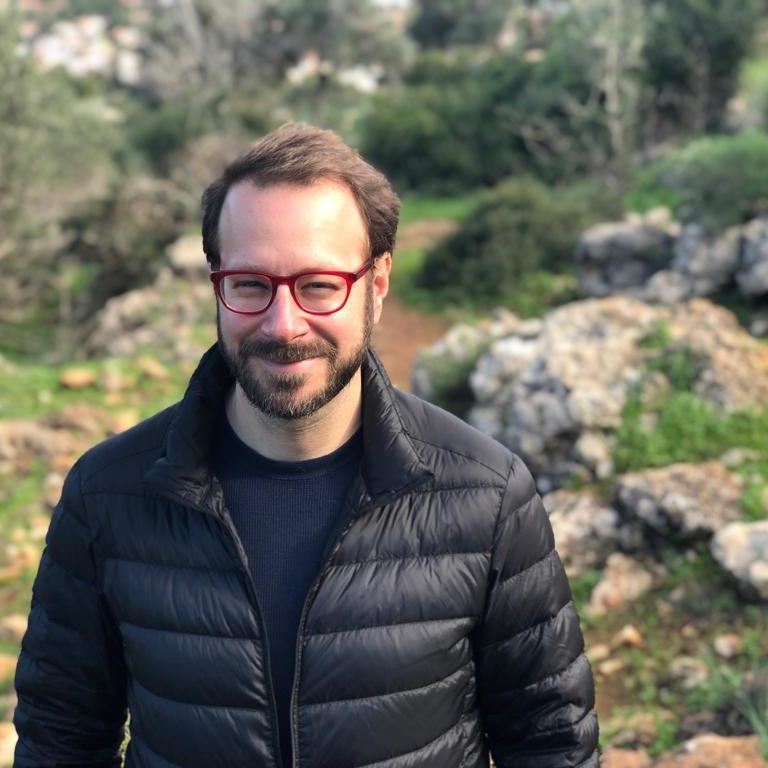Moses said to the children of Israel: "See, the Lord has called by name Bezalel, the son of Uri, the son of Hur, of the tribe of Judah. S/He has imbued him with the spirit of God, with wisdom, with insight, and with knowledge, and with [talent for] all manner of craftsmanship to do master weaving, to work with gold, silver and copper, with the craft of stones for setting and with the craft of wood, to work with every [manner of] thoughtful work. And S/He put into his heart [the ability] to teach, both him and Oholiab, the son of Ahisamach, of the tribe of Dan. S/He imbued them with wisdom of the heart, to do all sorts of work of a craftsman and a master worker and an embroiderer with blue, purple and crimson wool, and linen and [of] weavers, those who do every [manner of] work, and master weavers." (Shemot/Exodus 35:30-35)
Judaism, by its nature, is an exquisite balance of tradition and innovation, of steadfastness and adaptability. And the Jewish community (in all its myriad of dimensions) is the same – constantly branching and experimenting while tending to its deep and complex system of roots and traditions. Community, therefore, is the vessel in which we carry not only the Jewish faith, but also the ever-evolving sense of peoplehood and possibility. It is a sacred effort, and an innovative one as well. It demands a special kind of talent and a special kind of artistry.
As a community, we understand this. That is why we are always searching for our Bezalels.
Years ago, there was a perception of a false dichotomy between the "innovators" and the "establishment" in the Jewish community. However, over time those ‘innovators’ become more substantially supported by forward-looking leaders in our community (as the result of initiatives such as Slingshot, the ROI Community, Reboot and the diverse array of leadership development programs of The Wexner Foundation and others). Consequently, those leaders who were often on the "edge" (as well as their edgy and innovative approaches,) became part of the mainstream work of the Jewish community. At the same time, the "establishment" increasingly recognized the value of not only entrepreneurship, but intrepreneurship as well, deepening the investment in its own creative ecosystem and supporting the smart transformations of our institutions in evolutionary ways.
As a result of this convergence, the last decade brought us not only a bounty of creativity in the Jewish communal landscape, but a strong trend of collaboration and co-creation.
And yet…
With all the important support of “innovation” in the Jewish community, we oftentimes seem like we are still in an unending search to identify the “next” Bezalel and risk celebrating the “what” without paying attention to the “who.” In other words, I believe the Bezalels are actually already all around us but we don’t always see them as such. These individuals, “filled with the spirit of God, in wisdom, in understanding, in knowledge and in all manners of workmanship,” are right in front of our face.
Who are they?
You already know them: they are the tens of thousands of professionals who are the engines of our Jewish community’s organizations and institutions.
Instead of searching for them (since they are already found), can you imagine if we simply did an even better job of recognizing (and resourcing) these individuals in the same way we support the outside innovators we are always searching for? If we truly invested in measures that helped every single professional feel like an agent of innovation, like a Bezalel or Oholiab? They already do work grounded in talent and kavanah, bringing the spirit of God to their work, often making sacrifices in pay and personal time to do the hard work of carrying the vessel of our community. And like Bezalel and Oholiab, they all have been imbued with the wisdom of the heart to do this sacred work.
So, thinking in practical terms, in what ways can we recognize them and support these professionals as they seek to become even more masterful innovators?
First and foremost, it starts at the top – developing key leaders who can see these Bezalels in their own professional teams. Fortunately, numerous organizations like Leading Edge and JPRO support the development of senior executives and other professionals in our community who embrace building organizational cultures of innovation alongside of well-executed strategies for impact. Success also depends on the provisioning of working capital and infrastructure support that allow organizations to feel secure in their financial ability to innovate (a need that several major foundations in our community have recently pledged to support).
But this isn’t just a top-down issue. It won’t be solved by professional associations and philanthropists alone.
All of us have a responsibility to find ways to empower Bezalel-esque professionals at every level of our community organizations, and to enable them to feel like they can (and should) bring their innovative ideas to the forefront. And it starts by many of us seeing and saying what we know is true: far too often in our community, professionals feel like they need to defer to the lay leaders and the donors to really catalyze innovative change (or they feel like the innovative ideas will be more likely to succeed if they come from the "outside" as opposed to the inside of the organization). Some of these power dynamics within organizations actually chill the artistry and innovation that community professionals can and want to bring to their work. These dynamics need to be challenged and changed, not just via advocacy by the professionals, but by allyship from lay leaders as well.
In my work with organizations of all shapes and sizes, I have humbly learned that professional empowerment in this area isn’t going to be solved simply by innovation workshops, creative convenings or “20% time” strategies (modeled after Google’s well-known policy of encouraging employees to use 20% of their work time to explore new ideas). It takes something much deeper than that and much more consistent: creating (and sustaining) training efforts and management/governance approaches that not only celebrate the innovative work of community professionals, but also provide the financial incentives and rewards for them to innovate. We also need to continue to improve professional/lay communications and re-balance both perception and power so we create environments in which lay leaders demonstrate a bit more humility and our professionals feel free to express a bit more audacity. In this sense, we need lay leaders to also use different language with our professionals, seeing them (and speaking to them) as community weavers, not just paid workers.
A lot to ask? Sure.
But for a community obsessed with the need for innovation, isn’t it important that we also spend time investing thought and resources in how our entire field of professionals are supported as innovators? If we are truly in an ever-evolving task of creating and beautifying the vessel of our community, shouldn’t we continue to invest in the thousands of Bezalels and Oholiabs who work tirelessly every day to carry that vessel into the future?
Innovation isn’t an outcome. It’s a competency. When we stop treating it as the gold at the end of the rainbow (or the prize at the end of a competition) and instead realize it as the attribute of a pool of talent that is already working with our community, we will better harness its power and truly be able to build the type of tabernacle and world we can all be proud of.
And THAT would be an expression not only of artistry, but of holiness, worthy of carrying all of us into our collective and sacred future.


Photo by Johannes Plenio on Unsplash
Get To Know The Author
WHP Alum Seth Cohen (Atlanta 05) is the founder of Applied Optimism, a community and organizational design lab that helps companies, grantmakers, nonprofits and leaders design and apply optimistic solutions to complex organizational, communal and individual challenges.

